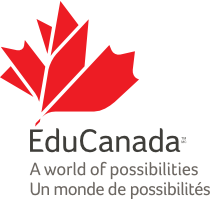Elementary school in Canada
Canada ranks among the world’s best countries for education. It all starts in elementary school, where children learn academic and life skills in safe and inclusive classrooms.
A high-quality education for your child
Canada’s elementary school teachers foster a love for knowledge, reward curiosity and build children’s confidence. They encourage students to ask questions and express their ideas. Canada’s globally recognized school curriculum equips students with skills to thrive in today’s world. The country holds one of the strongest student achievement records in the world, ranking ahead of Australia, the United Kingdom, the United States and New Zealand in reading, math and science.
Canadian elementary schools offer services to support students throughout their education journey. Prepare your child for a future with endless possibilities. Choose Canada for elementary education.
Facts about elementary school in Canada
- Age 4 or 5: Children start kindergarten
- September to June: Canada’s school year
- Monday to Friday: Students attend school
Elementary school options
There are different types of elementary schools in Canada:
Public schools
Many public schools in Canada accept international students. These schools deliver a standard curriculum overseen by their province or territory. In most regions of Canada, public schools offer classes in English, French or both languages. In some provinces, certain public schools offer a faith-based curriculum that is also available and open to everyone.
School grades in Canada
- Grades K to 6: Elementary school
- Grades 7 to 8: Junior high or middle school
- Grades 9 to 12: High school
- Exception: Québec, where high school is broken down into secondary 1 to 5
Private schools
Canada’s private or independent schools tailor programs to meet the unique needs of students. They feature smaller class sizes where children receive personalized attention. Most private schools deliver the curriculum and follow the standards set by their province or territory. However, some private schools operate independently of their provincial ministry of education. Contact the school directly to learn more about their curriculum and standards. Some private schools in Canada offer the option of boys-only or girls-only education. Some provide a faith-based education to cater to families who value religious teachings. Others follow educational approaches (Montessori or Waldorf, for example) which nurture creativity and critical thinking.
Did you know?
Canada has nearly 5.2 million students in public schools and 425,000 students in private schools
Cost of elementary school
The fees and costs depend on the type of school your child attends.
Public elementary school is free for Canadian citizens and permanent residents. International students are required to pay tuition fees.
Contact the school board in the area where you plan to live to learn about expected fees and costs for your child.
Private day schools have their own fee structures.
Private or independent boarding schools will have higher fees due to the wide range of educational and non-education services provided (such as room and board). Learn more about elementary school costs.
How to apply
First, choose the school you want for your child. Read about the admission requirements.
Next, prepare the materials you need to apply. You may need to provide:
- proof that your child completed grade levels that match those in Canada
- evidence that your child can communicate in English or French
- school results or report cards from your home country
Application dates
Some schools have deadlines to apply.
- Public schools: Contact the local school or school board to enroll your child. The school may assess your child to decide their grade level in Canada.
- Private schools: Contact the school to learn about application dates and requirements.
Learn more
- Top reasons to study in Canada
- National directory of schools in Canada
- Canadian Association of Public Schools – International
- Canadian Accredited Independent Schools (private schools)
- Languages Canada (language testing and programs)
- Date modified:
